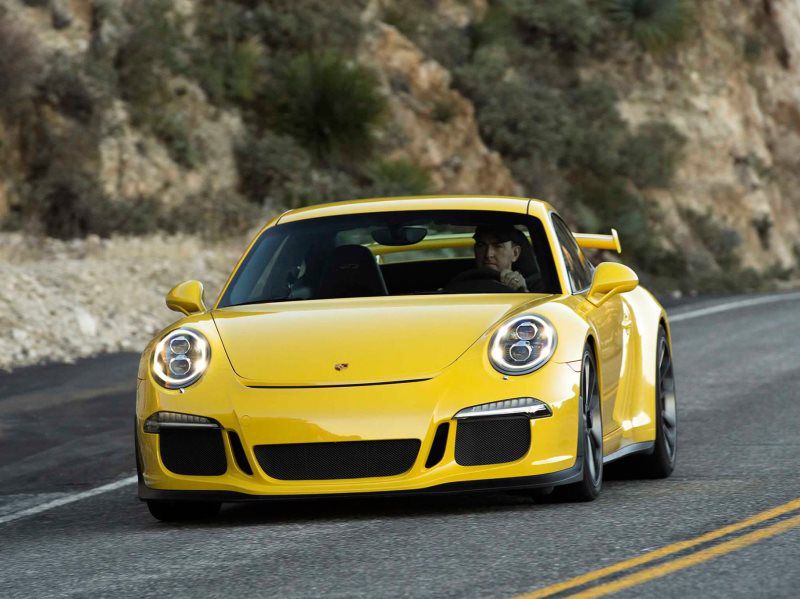Recent Articles
Popular Makes
Body Types
2015 Porsche 911 GT3 Test Drive
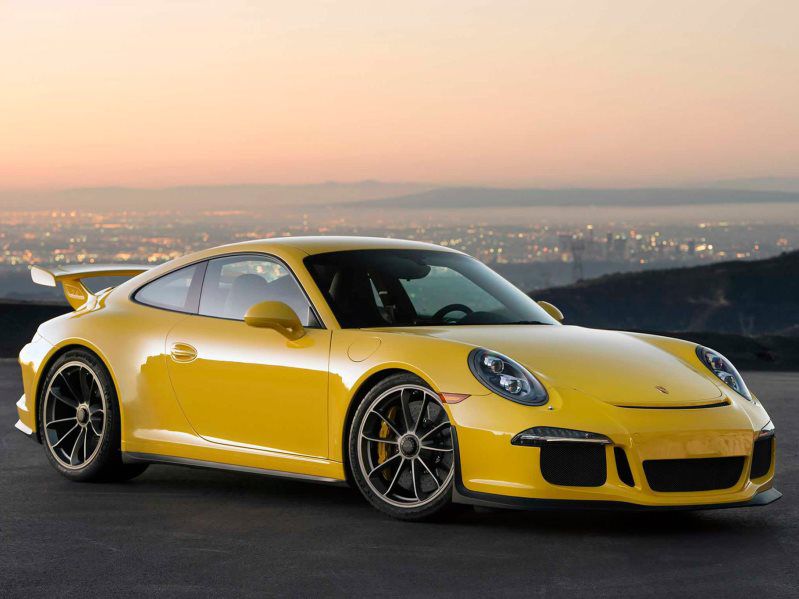
2015Porsche911GT3TestDrive8
Unbearable. Four syllables, and all it takes to describe how it feels to drive the 2015 Porsche 911 GT3… well, at least at legal speeds on public byways choked with mundane machinery. Yet seek a deserted stretch of favorite canyon road, or find a green flag at the club circuit, and my descriptive of the new rear-engine coupe quickly changes to just a single syllable: Bliss.
911 Variants
Porsche offers more than two dozen variants of its celebrated 911 model, but the GT3 — encapsulating five decades of Porsche expertise in building cars that perform extraordinarily well on the street and on the track — stands detached. It is relentless and uncompromised. Finding such a fierce and edgy model in a showroom selling vehicles for public consumption is equivalent to discovering that cheetahs are sold alongside lap-cats in your neighborhood pet store.
Purists were understandably concerned during the new GT3’s gestation. First, the 991-based platform was larger and more polished than its predecessor, suggesting that the new arrival would be civil where its predecessor was positively anti-social. Second was an announcement that sent shock waves through the enthusiast community: Every single new GT3 would leave the factory with a 7-speed PDK dual-clutch automatic gearbox — not a single manual transmission to be had. The GT3, long regarded as one of the most engaging sports cars, threatened to be losing qualities that had made it a magical automobile.
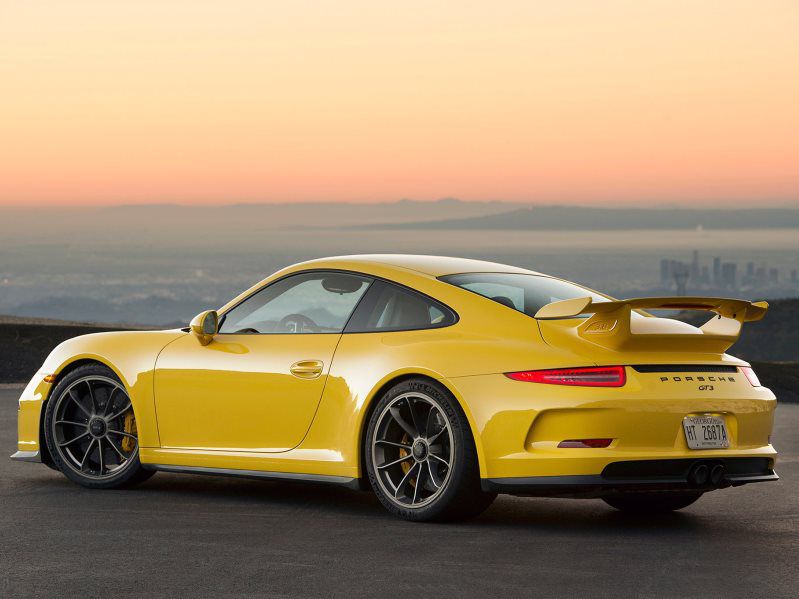
Judgment Day
Judgment day arrived when a brilliant Racing Yellow GT3 — more vibrant than the sun at high noon — was dropped in my driveway shod with four brand-new Michelin Pilot Sport Cup 2 tires and a full tank of fuel. (Next time you see a falling star, make a wish; some do actually come true.)
Unlike many of Porsche’s press cars, which arrive overburdened with options so as to demonstrate the model’s full range of features, the winged coupe came configured properly for an enthusiast, sporting just two excellent options: carbon-ceramic brakes (PCCB) and LED headlights (PDLS). The window sticker’s as-tested $145,785 seems a reasonable bump over a GT3’s $130,400 base price.
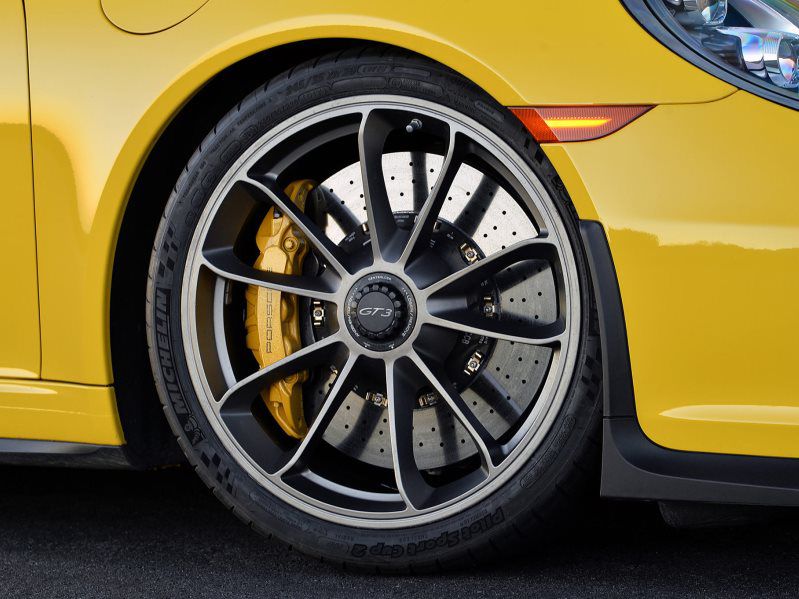
First Glance
At first glance the GT3 appears to be a standard 911 Carrera S with an aggressive aero kit. But a bit more investigation reveals the GT3 to be 1.7 inches wider than its sibling, the unique front and rear fascias designed to improve air supply to the radiator, cool the brakes and improve downforce. (A front axle lift system is available, and recommended, but it was not fitted to my press car.) The distinctive fixed rear wing, mounted on a decklid modeled of composite carbon fiber, offers adjustable pitch settings for track use.
The primary construction material in the unibody GT3 is steel; lightweight aluminum is used for the roof, doors and wing. According to Porsche the entire shell is 13-percent lighter than the previous model, and chassis torsional rigidity is up by 25 percent. At each corner are artfully forged 20-inch central locking aluminum alloys wrapped in gummy Porsche-spec Michelin Pilot Sport Cup 2 tires. The staggered fitment — 245/35ZR20 up front and 305/35ZR20 in the rear — fills each well with watchmaker precision.
Assemble the components into a single puzzle, and the new GT3 emerges as one of Porsche styling’s best work.
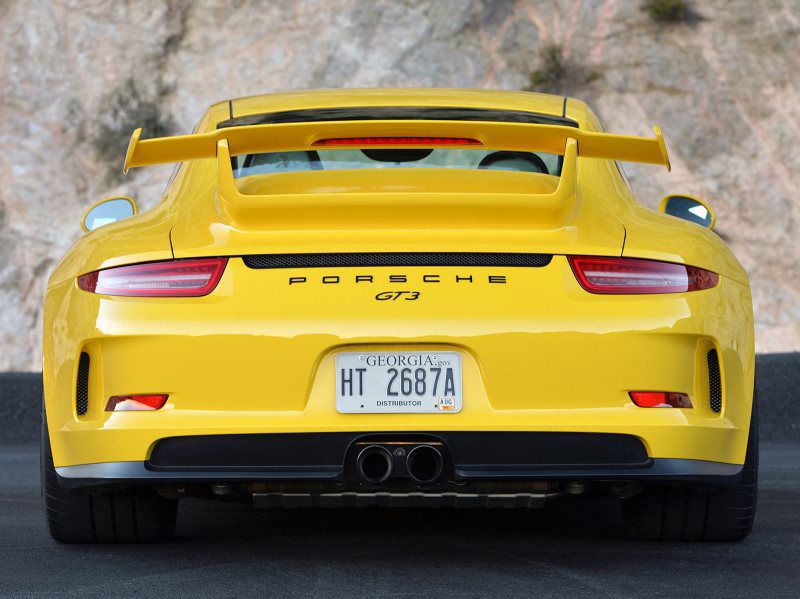
Inside the Cabin
Subtle differences within the cabin differentiate the GT3 from its less aggressive siblings. Most noticeable is the absence of the tiny rear seats; this helps save weight and eases the installation of an available bolt-in roll cage (bonus: the carpeted space behind the two front passengers adds several cubic feet of cargo capacity). Other distinctive elements include minimalist, but very comfortable and supportive, sport bucket seats, yards of soft synthetic Alcantara upholstery, and a gray-faced tachometer with a startlingly high redline.
Twist the key in the switch mounted as is traditional to the left of the steering wheel, and the naturally aspirated flat-6 barks to life with a throaty roar, sending deliberately strong vibrations throughout the cabin (standard GT3 kit includes electronic magnetorheological engine mounts, which range from soft to firm based on driving behavior). The ruckus is unusually deep for a six cylinder, and the bass tones are accompanied by a bright metallic reverberation that hints at precision, race-bred componentry buried only a few inches ahead of the twin center-mounted exhaust tips.
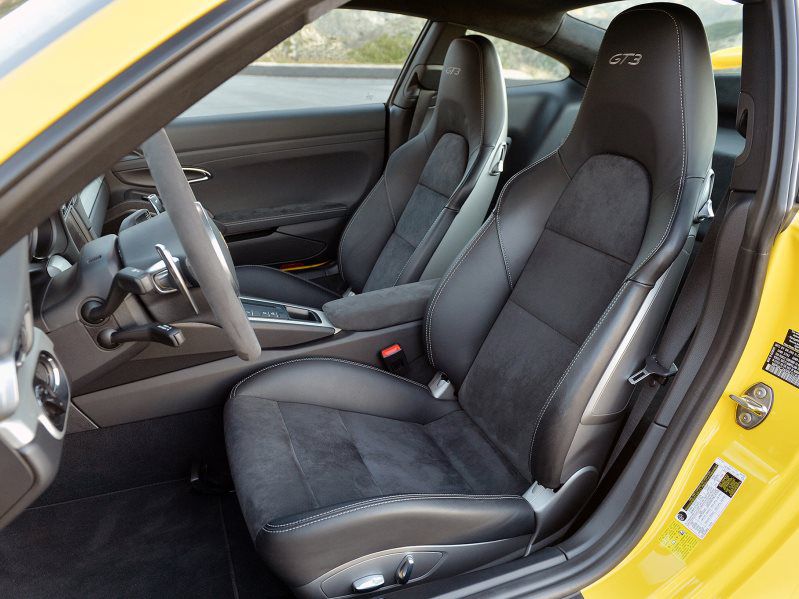
3.8 Liter Jewel
Hung aft of the GT3’s rear axle, and all but invisible without using a hoist, is a all-new 3.8-liter reciprocating jewel, a Porsche Motorsports-developed direct-injected flat-6 based on the standard Carrera’s block (it is not built from the famed Mezger flat-6). VarioCam variable valve control optimizes combustion, and a race-bred dry sump lubrication system maintains a steady flow of oil — essential for a car expected to see track time. Special care was taken to minimize weight: hollow valves, forged aluminum pistons and titanium connecting rods help lower mass and support the stratospheric 9000-rpm redline. This magnificent engine develops 475 horsepower and 324 lb-ft of torque, an output of 125 hp/liter — which means, if you’re not familiar with the ratio, such power from a naturally aspirated engine this size is astonishing.
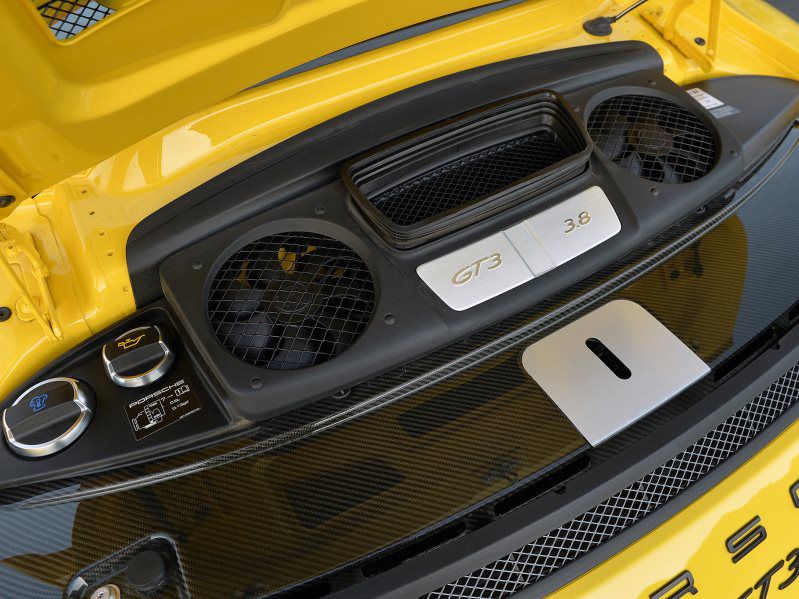
Drive Time
Pulling the Alcantara-wrapped aluminum PDK lever into drive readies the gearbox, but there are two other small actions the driver can initiate before departure. First, a press of the console-mounted “Exhaust” button opens silencer flaps for a more ferocious roar. Then, a press of the PDK “Sport” button seems to inject 1,000 mg of caffeine into the GT3’s bloodstream.
The high-revving engine has ample torque to move the coupe quickly off the line, but it doesn’t boast the brutality of large displacement or forced induction. It’s not a stomp-your-right-foot burn-out champion, like the supercharged Corvette Z06 or the turbocharged McLaren 650S, but instead prefers to whirl in a turbine-smooth rush that picks up the tempo as quickly as the spinning tachometer. The flat-6 really pulls hard once it hits 4500 rpm and the intake manifold switches to shorter runners, speeding airflow into the combustion chambers. Porsche quotes a 0-60 sprint of 3.3 seconds with the help of launch control (easy: hold the brake, floor the accelerator, let go, hang on) and a top speed of 195 mph. I bet it does better.
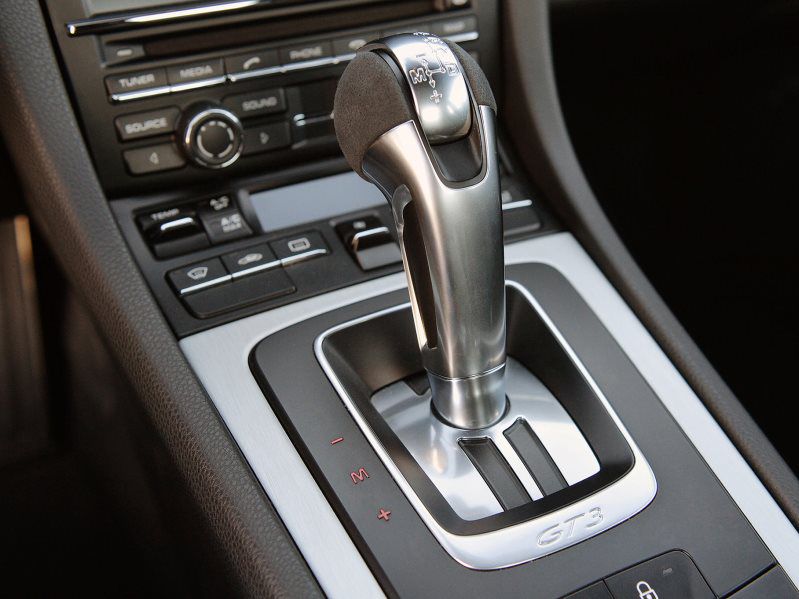
Around Town
Around town, obeying the rules, the GT3 behaves like an anxious three-year-old at the mall holding hands with Mom — it would rather be doing anything else. It is a chore to keep the tachometer on the left side of the dial, difficult to keep speed aligned with other traffic, and nearly impossible to keep my mind from daydreaming about wide-open throttle down the Mulsanne Straight. The ride is firm, road noise is abundant, and creature comforts are minimal (the interior mirror doesn’t even automatically dim). The Porsche literally seethes with evidence that it has another calling.
Determined to find that mission, I cancel a mid-week lunch appointment and head for the infamous Mulholland Highway, overlooking Malibu.
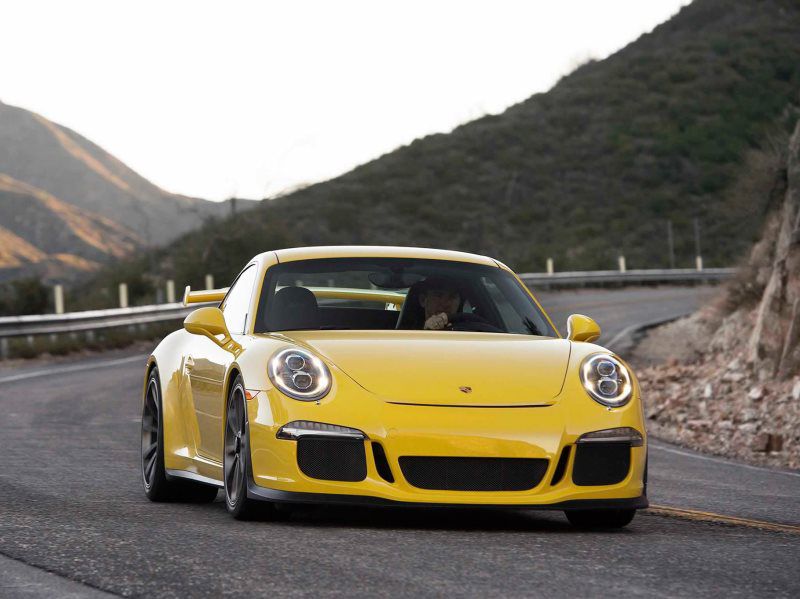
Sophisticated Suspension
Underpinning the new GT3 is a sophisticated independent suspension with impressive — and standard issue — aids to tenacious road holding: Porsche Active Suspension Management (PASM) variable damping; rear-wheel steering, whereby two electro-mechanical actuators turn the rear wheels up to 1.5 degrees either in the opposite (low-speed) or same (high-speed) direction as the front wheels to “virtually” shorten or lengthen the wheelbase and enhance handling; and Porsche Torque Vectoring Plus (PTV Plus), which offers an electronically controlled fully variable locking rear differential with selective braking at the rear wheels for improved traction and turn-in.
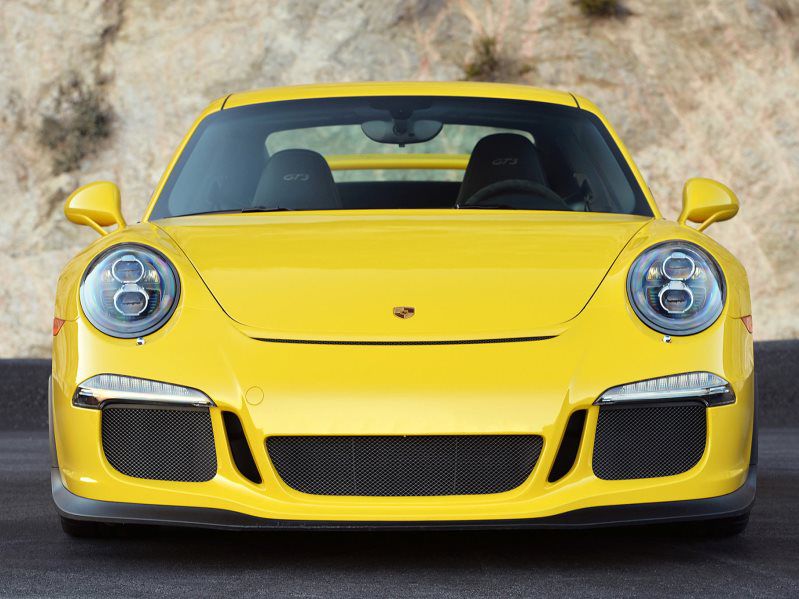
Witness the Fury
With windows down and air conditioning off to better witness the machine’s fury, I initiate my test with a deep dive into the first corner. The PDK gearbox senses the hurried pace and increased g-forces and immediately drops two gears as I tap the brakes. The tachometer climbs to 6000 rpm as I hit the apex and press my right foot to the floor. The rear end wiggles ever so slightly, easily corrected with a few degrees of countersteer, and the GT3 rockets out of the corner.Corner after corner, the engine never leaves its comfort zone, screaming giddily between 5000 and 9000 rpm without skipping a beat.
The engine sprints to 9000 rpm, emitting a throaty wail that’s sure to disturb any dozing coyotes in the area, the PDK cracks off a rapid upshift, and my head remains pinned against the embroidered “GT3” on the seatback – the shift feels transparent to the acceleration curve – as the engine starts its climb back up from 5000 rpm.
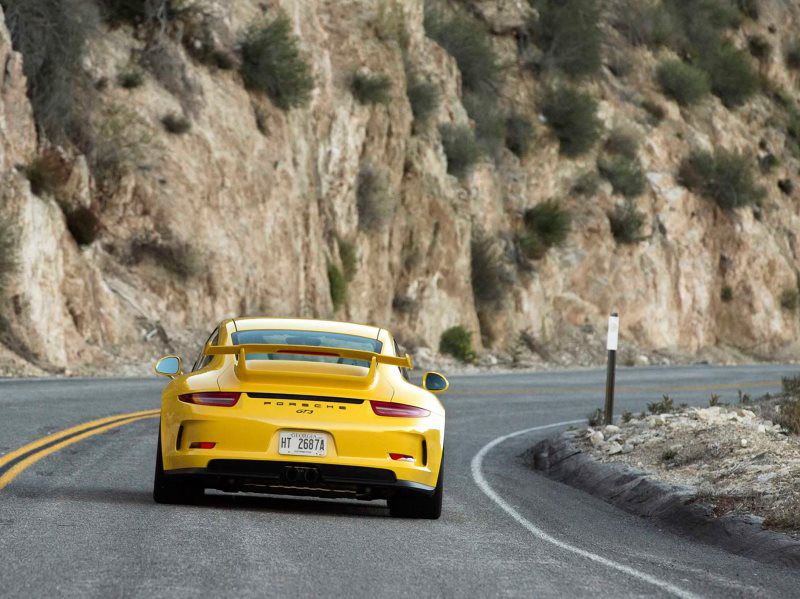
Screaming at 9000 RPM
Corner after corner, the engine never leaves its comfort zone, screaming giddily between 5000 and 9000 rpm without skipping a beat. I am awed by the immediacy of the power delivery, not a hint of delay between throttle and deafening clamor echoing off canyon walls.
My derrière is acutely aware that the engine resides way back there, but there is no off-throttle snap oversteer or absence of balance through the turns. Instead the GT3 sets itself up brilliantly, without any hint of body roll, and the suspension keeps the tires glued to the dusty asphalt (some of the roads above Malibu aren’t very smooth, so I ran with dampers dialed to soft). I scraped the underside of the rubber chin beneath the nose a few times on the tight sections of one canyon road (no visible damage), but the suspension — always under the watch of PASM — never bottomed out.
